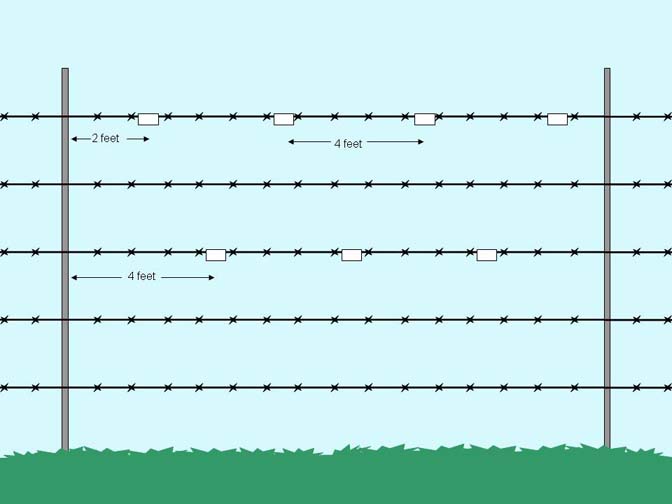Introduction
Our radio telemetry study of Lesser Prairie-Chickens in Oklahoma, 1999 through 2014, revealed that collisions with barbed wire fences account for over 40% of mortality. Our mission involves cooperative conservation solutions, and we, in cooperation with the U.S. Fish and Wildlife Service’s Private Stewardship Grant Program, are currently working with landowners in high priority areas to remove unnecessary fences. We have also developed a method of marking fences in an effort to make them more visible to prairie-chickens, and, it is hoped, reduce the collision hazard and annual mortality rate.
The ideal method of marking fences would incorporate the following attributes:
- It would increase the visibility of fences to prairie-chickens without being visually objectionable to landowners.
- It would not add significant weight or wind resistance to fences, or be harmful to livestock.
- It would be relatively quick and easy to assemble and apply.
- It would be relatively inexpensive, given that hundreds or thousands of miles of fencing could potentially be marked.
- It would be durable enough to last for years.
We are currently marking miles of fences, and continuing to monitor prairie-chickens to evaluate the effectiveness of our marking method.  This page constitutes a how-to manual for those wishing to try our method of marking fences for conservation of prairie-chickens or other grassland grouse. We would like to hear your ideas or experiences with this or other methods of marking fences. Contact Don Wolfe
This page constitutes a how-to manual for those wishing to try our method of marking fences for conservation of prairie-chickens or other grassland grouse. We would like to hear your ideas or experiences with this or other methods of marking fences. Contact Don Wolfe
Reducing Fence Collisions by Marking Fences
As seen on our Lesser Prairie-Chicken page, collisions, primarily with fences, are the single greatest mortality cause for Lesser Prairie-Chickens in Oklahoma. Based on some work done in Europe, marking fences to increase the visibility may reduce collisions by prairie-chickens and other birds.
We experimented with several methods of marking fences, and decided on the following method (at least until and if a better method is developed).
- Marking material is the “undersill” strips (trim strips) of vinyl siding made by Georgia Pacific. It is available at Lowe’s or Home Depot for about $4.56 for a 12 foot strip.
- These undersill strips have a “lip” that will allow them to simply snap onto barbed wire fences (see photo below). The material can easily be cut with a pair of tin snips for small marking projects.
- For mass production, using a 10″ miter saw with a 200 tooth blade works very well (remember to wear safety glasses and a dust mask); we can cut eight pieces at a time with the miter saw (hint: using a blade with larger teeth can cause the material to break rather than cut cleanly).
- We cut the strips into 3″ pieces, thus a 12 foot strip yields 48 pieces.
- Since most of the fences in our focus area are 5-wire barbed wire fences, we are marking the top wire and the third wire down from the top.

- For the top wire, we place the first marker 2 feet from the post, with 4 foot spacing for each subsequent marker. On a “typical” distance between fence posts of 12 feet, the arrangement will be: post – 2 feet – marker – 4 feet – marker – 4 feet – marker – 2 feet – post.
- For the third wire, we use the same spacing, except that we begin 4 feet from the post, thus staggering the markers (see diagram and photos below). For the same “typical” distance between fence posts, the arrangement on the third wire will be: post – 4 feet – marker – 4 feet – marker – 4 feet – post.
- With this fence post distance, we use 5 markers between posts (see diagram and photos below).

Depending on the exact fence post spacing, usually between 2000 and 2200 markers are used per linear mile. The cost for materials is about $200 per mile. The time required to place these markers on fences is 1-2 person hours per mile. We currently have a study underway to evaluate effectiveness of fence marking for reducing prairie-chicken mortality.
Download a PDF version of these fence marking instructions
